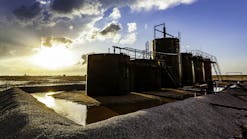Driven by strong project activity, the worldwide control valve market experienced double-digit growth in 2005 and is expected to grow at a compounded annual growth rate (CAGR) exceeding 5.5 percent over the next five years, according to a study by ARC Advisory Group (www.arcweb.com). The market, roughly $3.5 billion in 2005, is forecasted to exceed $4.5 billion in 2010.
According to ARC, the global control valve market is in the midst of a phase of unprecedented growth due to booming greenfield plants in developing countries and rising investment in oil and gas exploration and production.
As demand for control valves has risen after years of decline, many control valve suppliers are struggling to meet the demand, notes ARC. ARC says the leading obstacle to meeting demand in the control valve market is limited manufacturing capacity in the foundry industry. Foundries are a necessity in the manufacture of control valves because they are used to forge steel into finished valve bodies.
Several factors are cited as contributing to the decline in the number of foundries in operation between 2000 and 2005, including high prices for raw steel and the overall shift in emphasis towards software–based products. While the control valve market was focused on developing software and digital positioner products, the decline in foundry capacity was not a problem. With the industry’s renewed emphasis on hardware sales, however, ARC says the limited number of foundries available is a challenge for control valve suppliers.
How effectively control valve suppliers can address the drive toward integrating information technology with process plant operations are key differentiators for the success of control valve suppliers today, according to ARC. As process manufacturers work to add intelligence in production assets to improve process control and visibility, many control valve providers have strained to adequately address this need. To compensate for the lack of a single-source automation solution, ARC says many control valve suppliers have joined forces with leading control system suppliers. Working together, control valve and control system suppliers are able to exchange asset and process knowledge for enriched asset management solutions. Using process data and device application knowledge to identify issues and problem areas, analysis of assets provides potential solutions that are presented to both operators and maintenance personnel. ARC says the success of these initiatives will determine the market landscape for years to come.
China and India’s expanding economies are the main driving factors behind growth occurring in control valve, actuator, and positioner investments worldwide. China’s production is skyrocketing, reflecting its strong economic growth and signaling its emerging status as a major global manufacturing force. China, the fastest growing economy in the world, is expanding its industrial infrastructure to meet growing demand from increasing consumption. Large chemical & petrochemical plants, grassroot oil and gas refineries, as well as new power plants are fueling much of the market growth in China, according to ARC.

